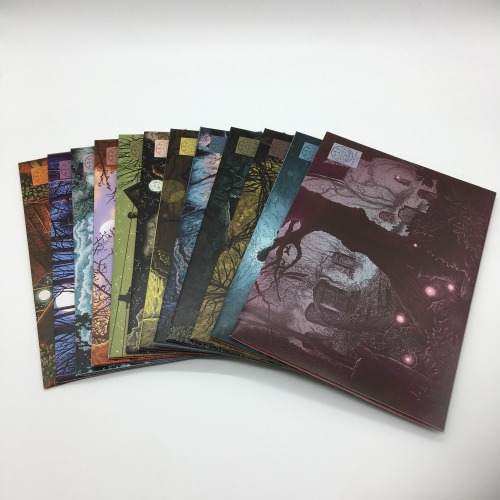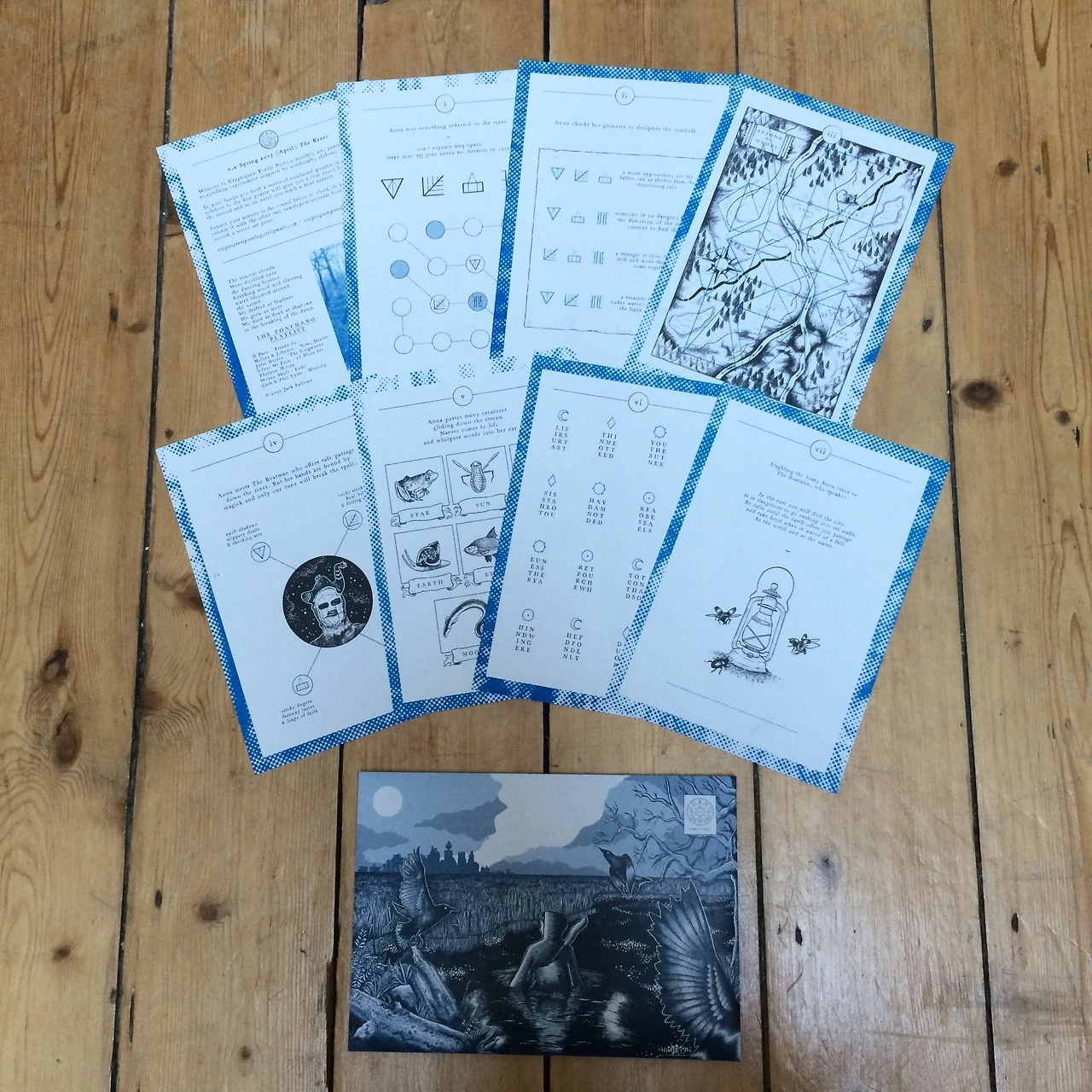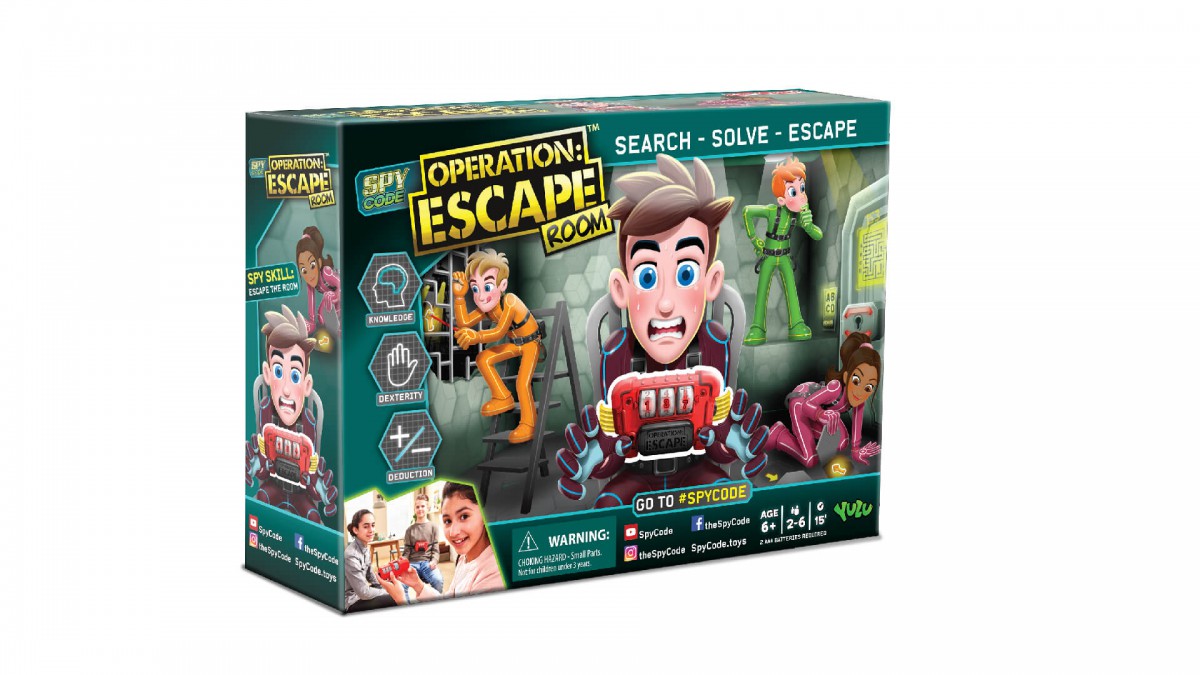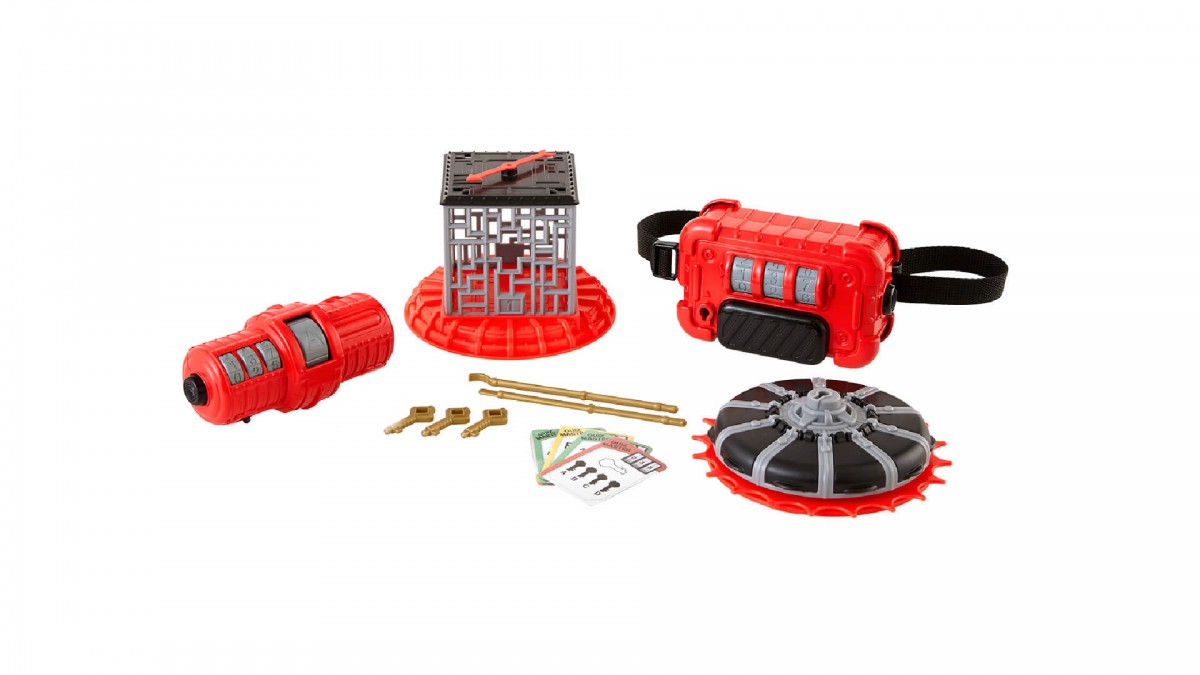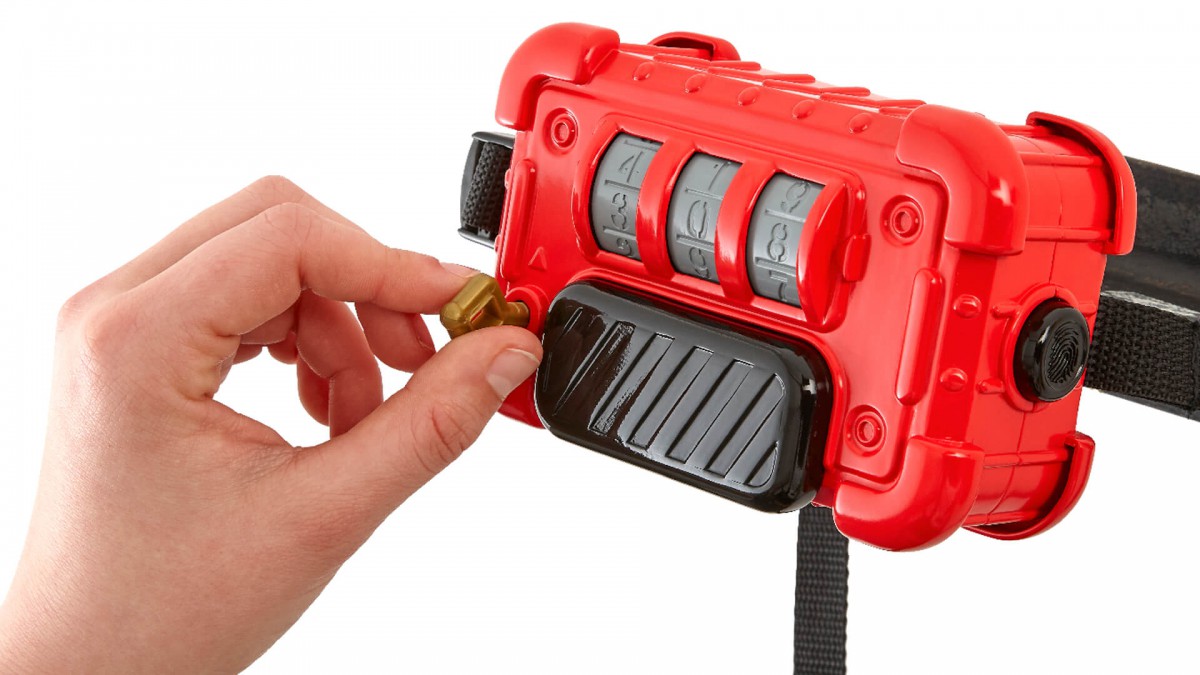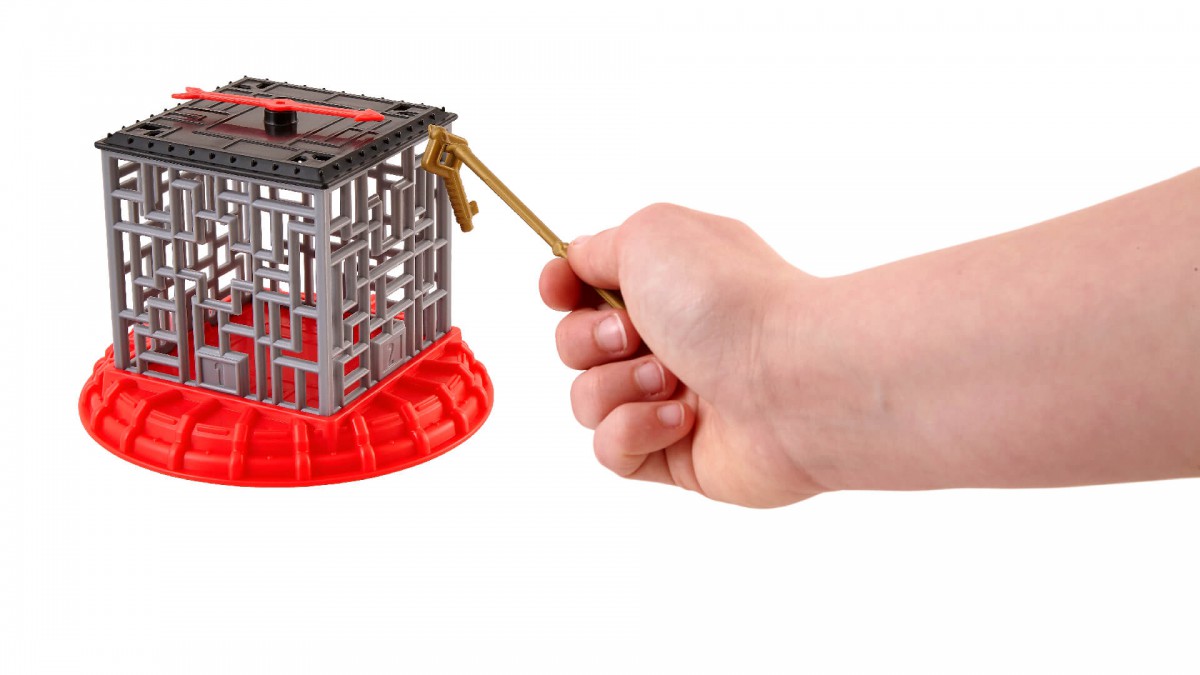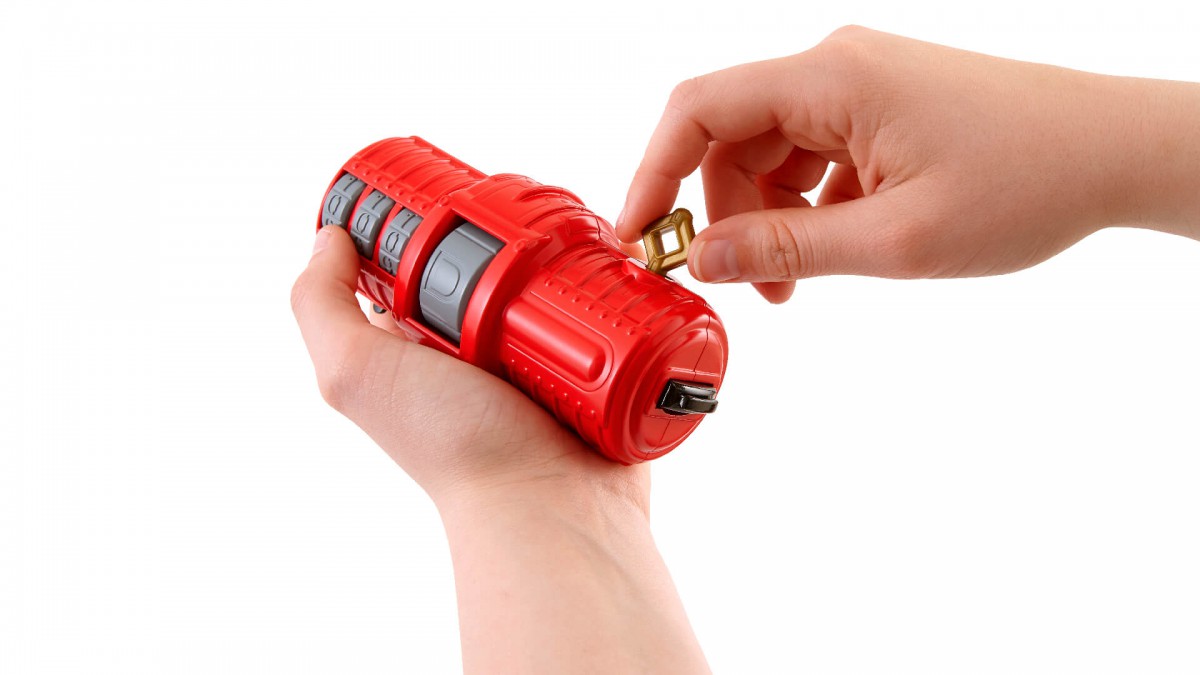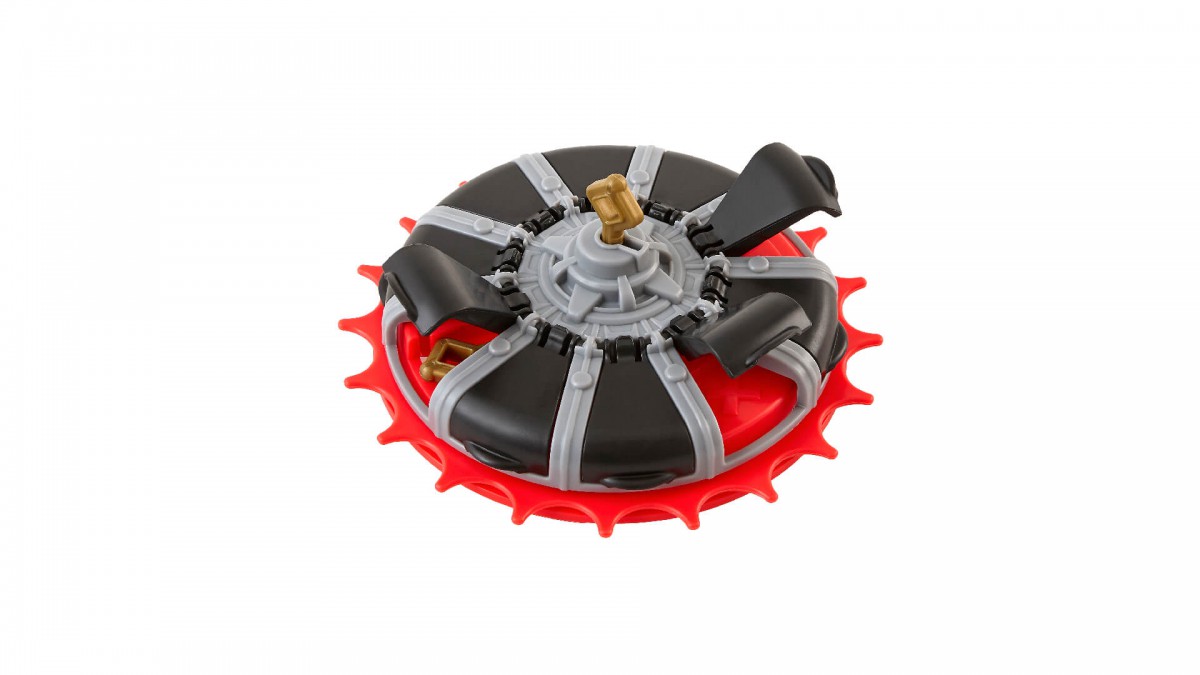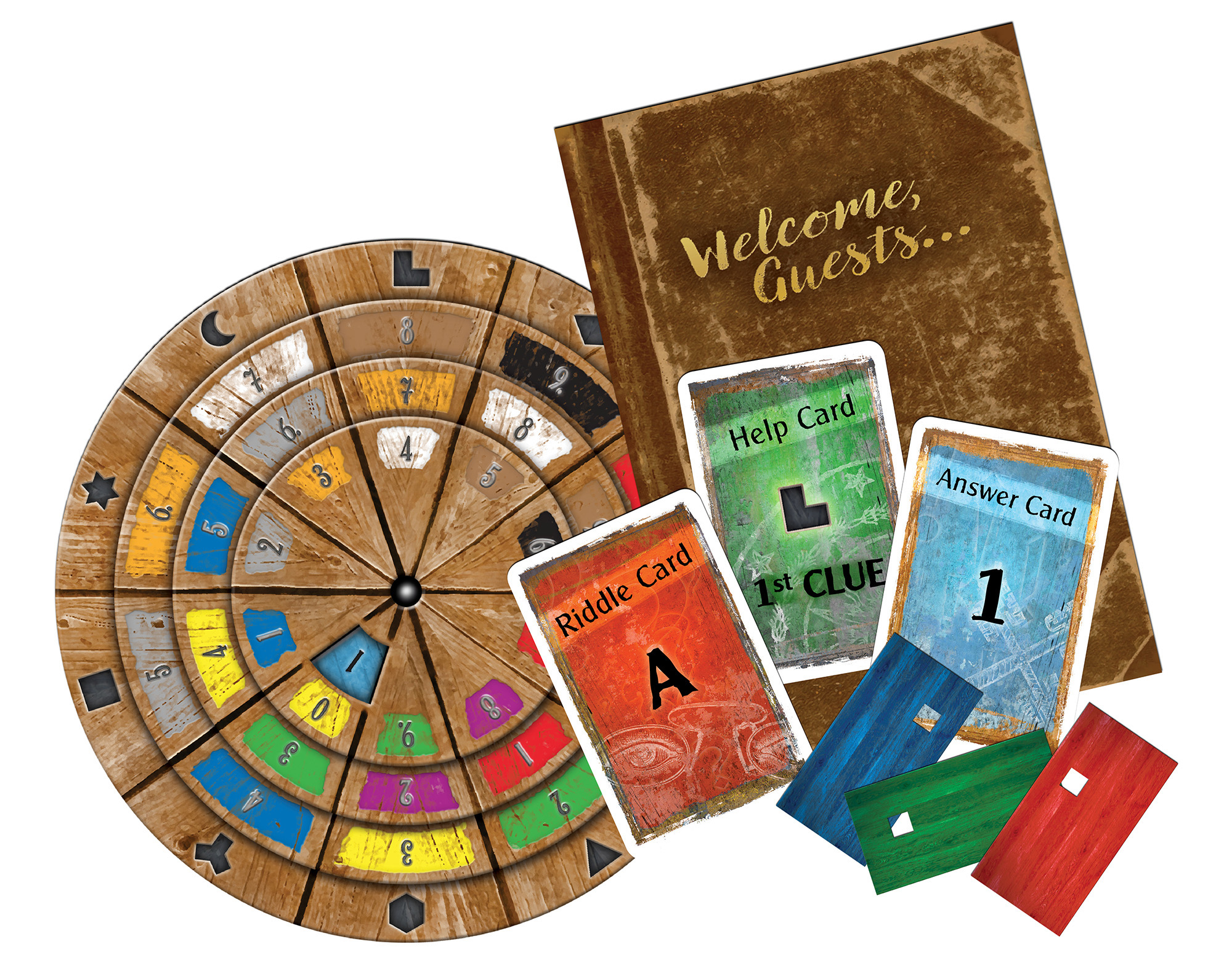Slightly disturbing (in more than one way)
Publisher:
Norsker Games
Designers:Jeppe Norsker
Artist:Jeppe Norsker
Languages:Danish, English, German, French
# of Players:1-5
Age:16+ (due to the dark themes - I recommend player discretion)
Duration:90 min
BoardGameGeek References:
Game Design & Mechanics
 |
| Some official "selling points" from the print-and-play game |
Players: "Wow! Unlock is the best ER table game ever!"
Jeppe Norsker: "Hold min øl..."
- This tongue-in-cheek observation is a lot more accurate than you might expect. It seems to me everything in 50 Clues is reminiscent of the now-omnipresent games from Space Cowboys, but with a "Here's how I would do it!" twist to it. So let's review the differences - and similarities - between them.
- Instead of a dedicated app, the game uses a web page. You pick your scenario, enter your serial number (more on that later), and you're good to go. The game state is saved locally, so as long as you don't clear your browser cache, you can leave the game and come back to it later.
- Like with Unlock, every scenario use a dedicated deck of numbered cards, which you gradually reveal (and discard) as the story progresses.
- The cards will bear a number of codes over them. There are 3 types of codes:
- White-framed digits indicate a card that can immediately be revealed. Those digits are typically more subtle that the others, to emulate the feeling of searching around, but the rectangular frame removes any possible ambiguity.
- Red-framed 3-digit codes indicate something that can be interacted with - typically an inventory object. Using the web app, you can try combining any red code with another.
- Black-framed codes need to be entered directly inside the web app, triggering an effect of some sort, or launching an interactive component in the app.
- There is no enforced time limit. The web app will gauge your performance based on your number of wrong attempts, not on the amount of real time elapsed. You need a break? Just stop playing.
- Like I said earlier, every 50 Clues deck sold comes with a unique serial number. You need to enter that number on the website in order to start playing. The same number can be used up to 30 times.

|
| Yep - Nothing but wholesome fun here... |
Pros
- Puzzle-wise, this series shows at least as much promise as the first "Unlock!".
- No "wasted cards", since every game mechanic is handled by the app.
- The darker, greyscale art helps sets the tone.
- The age restriction for a number of theme that simply wouldn't work in family-friendly games.
Cons
- There's no way around it. From my point of view, the "activation limit" is a huge turn-off. 😞 I contacted the author, who pointed out that he is concerned with the increasing amount of counterfeiting in the boardgame market, and told me that "30 times should be more than enough for private use". Those are reasonable arguments, and as a boardgame fan, I'm quite familiar with the state of things. And yet...
With the price of said boardgames steeply increasing in recent years, I simply can't endorse a setup where a fully-replayable game has been - arbitrarily! - turned into a limited-play, throw-away box. Gaming pub owners, will you be able to keep track of the number of remaining game sessions in each box? Second-hand buyers, can you really trust that unknown seller who tells you the game "has only been played twice"? 😨
In fact, I would have much preferred a system where new game sessions can be purchased for a low price (2 or 3 bucks), with brand-new decks coming with a couple "free" activations out of box. Heck, one could even offer every scenario as print-and-play, selling the "professionally printed deck with 3 included activations" just as a convenience. (Most people would go for that anyway.) - Despite the publisher / designer's claim that having a web app is "better" than a phone/tablet app, the fact is that you can currently play Unlock! while traveling on a plane, camping in the great outdoors, or even during a power outage. 50 Clues, not quite.
- The game's theme and appearance might just not be your cup of tea.
Currently Out (underline bold titles are those I've played)
- The Home Temple (Free Print-and-play - find it here)
- Leopold Part 1: The Pendulum of the Dead
- Leopold Part 2: White Sleep
- Leopold Part 3: The Fate of Leopold









